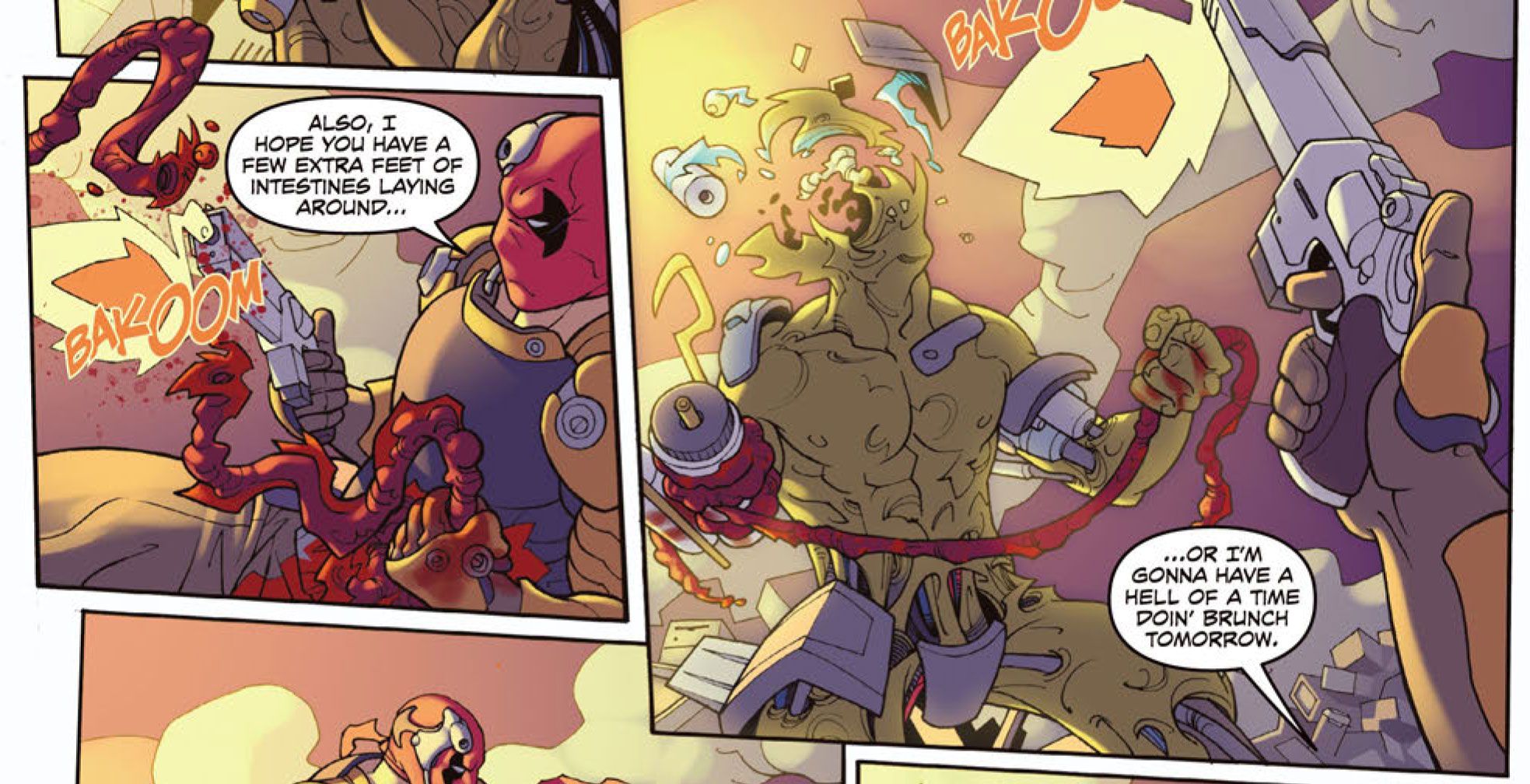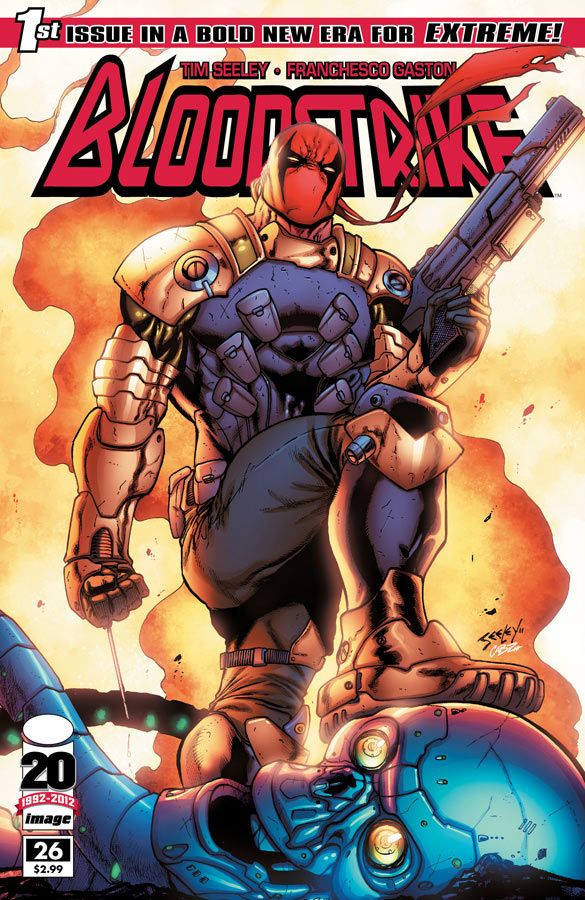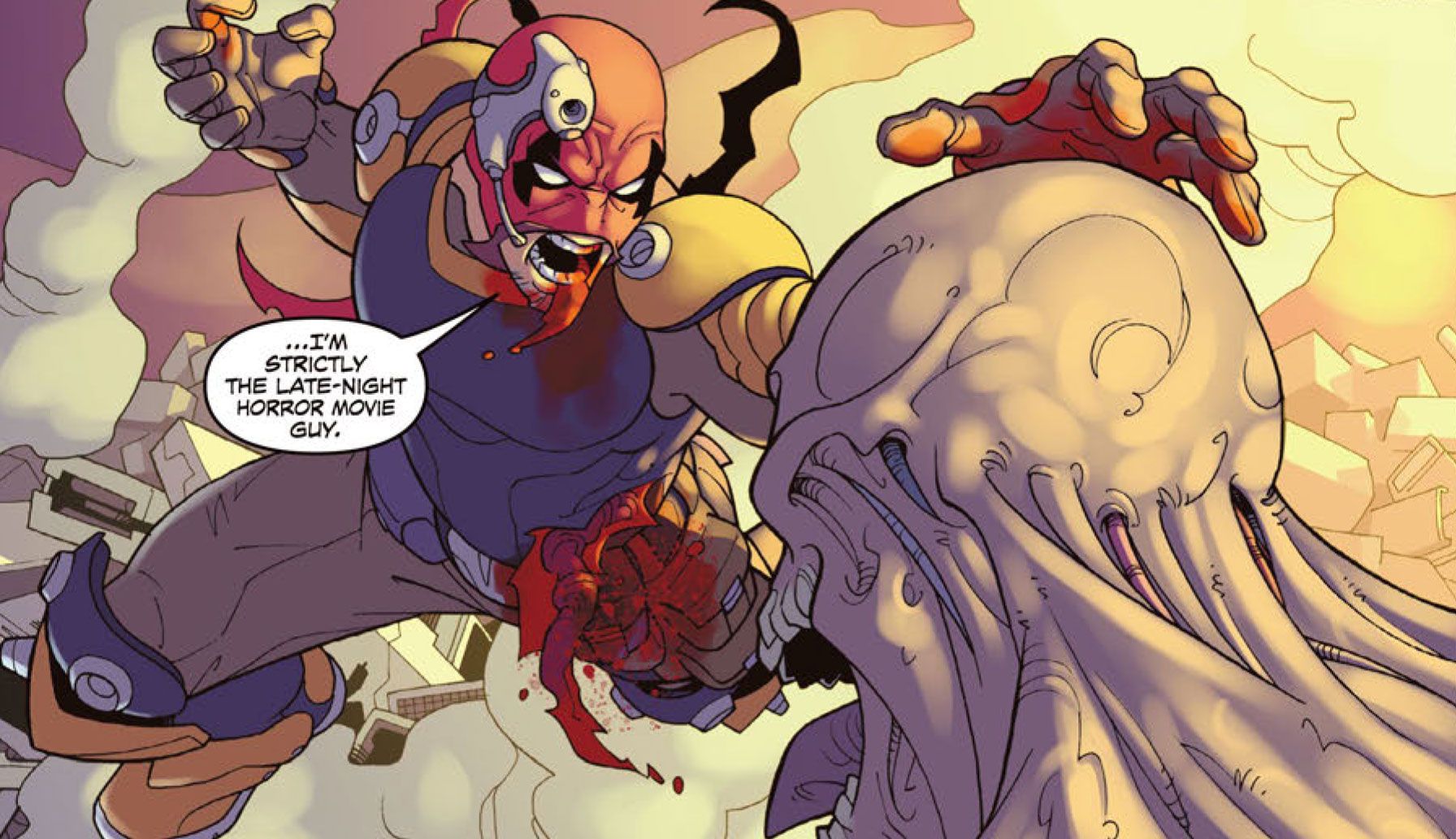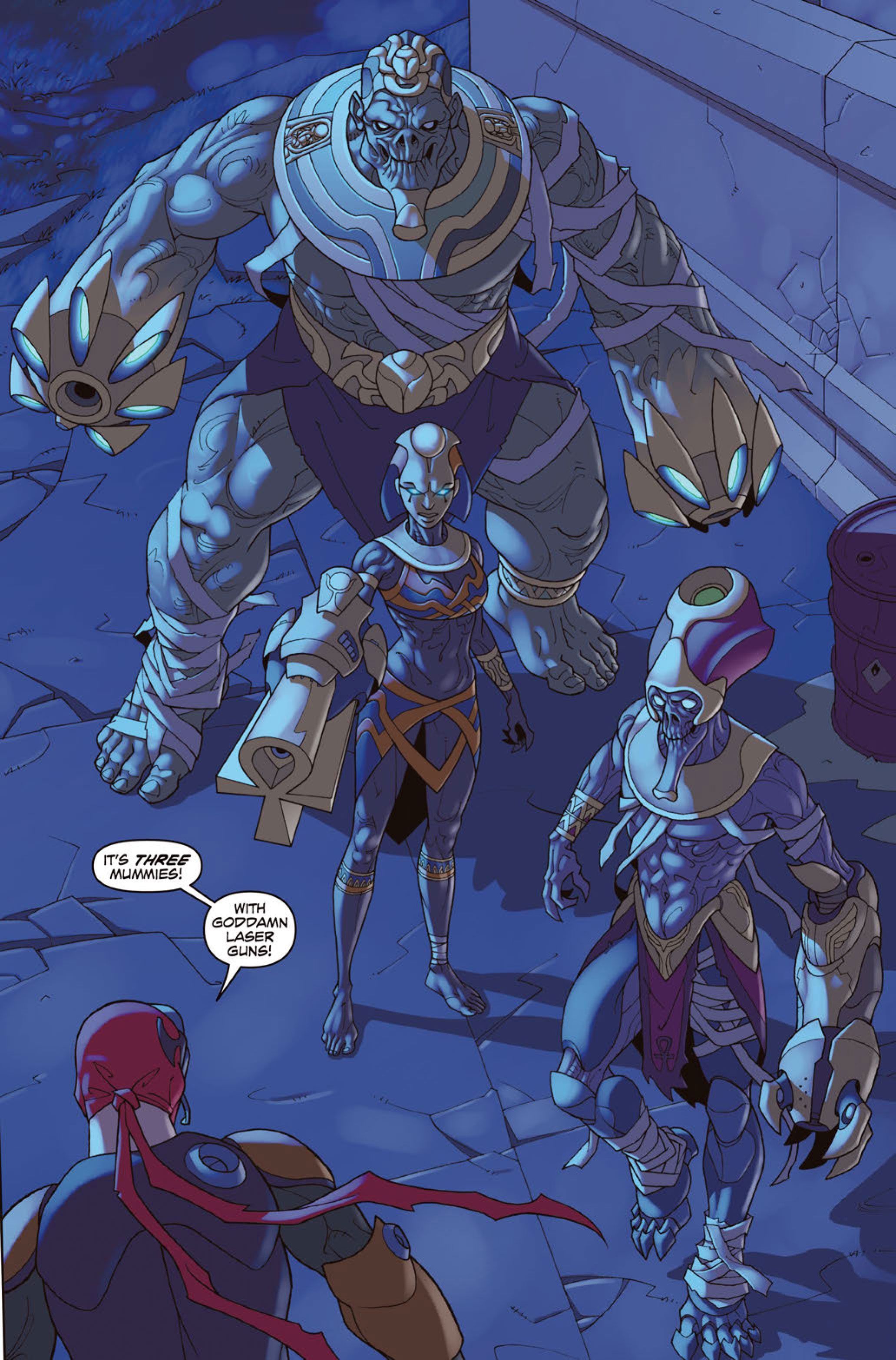When the announcement broke that Rob Liefeld and Image Comics were reviving the Extreme Studios titles, I was pretty excited, and not because I was a huge fan of the imprint back in the day. In fact, the only Extreme titles I can remember buying and reading were the first few issues of Youngblood. The whole Image Comics phenomenon hit around a time that my interest in superheroes was waning, as I started to shift more to things like Sandman. So as they left Marvel's biggest superhero books, gradually I did, too, at least for a little while. And I didn't replace them with these new books from the hot young company formed by seven rebels who decided to forge their own path. No, I was on to Neil Gaiman and Jeff Smith and Hellblazer and Sin City and other things.
I do remember the Image thing as being a huge phenomenon, though. I remember my friend Mike showing me the CNN segment he had recorded about the birth of Image Comics, about how all these guys who made X-Men, Spider-Man, etc. such hot titles had decided to do the unthinkable and form their own company. I remember seeing Liefeld on Dennis Miller, the Levi's 501 ads, the long lines at the Dallas Fantasy Fair for a bunch of artists who weren't even the original seven, but still commanded an enthusiastic crowd ... I remember being at the comic book store flipping through a copy of some random title when two kids and their mom came in looking for the Bloodstrike "Rub the Blood" cover. They came in, bought their weekly allowance's worth of Image books, and taped them all up in bags with the hopes, I guess, that they'd be worth something some day. "Aren't you going to read them?" I asked. They just looked at me. "They don't read their comics," their mom said proudly. Ah, the 1990s.
So, no, it wasn't nostalgia that excited me about the Extreme revival, it was the creators who were attached to the books. Brandon Graham and Simon Roy's Prophet has been compared to some of the great European sci-fi epics. Glory, meanwhile, by Joe Keatinge and Ross Campbell, cast the artist against type. Campbell's work on Shadoweyes, Wet Moon and, well, everything else he's done has pretty much been, as Kelly Thompson put it, "the antithesis to the cheesecake exploitative art Glory was known for in the '90s," but on this new take, it just works really well.
At the time, though, I probably didn't give the announcement that Tim Seeley was writing Bloodstrike its due. Part of that is because I knew next-to-nothing about Bloodstrike, beyond it being the book that sported the infamous "Rub the Blood" gimmick cover. Was "Bloodstrike" a team or a character? Was it some sort of Youngblood spinoff or its own thing? Didn't it have something to do with Brigade, which was some sort of team book too, right? With a similar main character? Like I said, up until recently I'd only read a handful of Extreme titles, but at least in the cases of Glory and Prophet I had a general sense of what the books were about and who starred in them. Bloodstrike was an unknown to me.
Luckily, after reading the first three issues of the relaunch, I know that doesn't really matter. Seeley and artist Franchesco Gaston have created a very accessible story that plays off the history of the previous incarnation without getting bogged down in it. They weave in any pertinent facts about what came before in such a way that when I first read it, I wasn't completely sure if they were pulling from the book's history or just making up a new one. Most importantly, they have a lot of fun while doing it, and that sense of fun spills out all over the comics page--kind of like Cabbot Stone's guts do in the first scene in issue #26. Yeah, it's dark at times, funny at others, and both much of the time.
If you aren't familiar with Bloodstrike, like I wasn't, all you really need to know is explained in that first issue. Since reading these issues, though, I have hit the internet to find out what Bloodstrike was about back during its original run, as I really was curious to know if Seeley and Gaston were tossing all that out and just coming up with some of this craziness on their own. The basic concept is that Bloodstrike started out as a bunch of undead superhero/assassin types working for a shady government agency. They had all died before and had been brought back by something called Project: Born Again, and if they were damaged in battle they could be "repaired" using that same technology. It comes in very handy for their leader, the aforementioned Cabbot Stone, several times over the course of the three issues I read, and Seeley never misses an opportunity to have fun with it. Stone has a brother named Battlestone who was a member of Youngblood at some point and led the group known as Brigade (I thought there was a connection...). Both Battlestone and their father, a Magneto-esque terrorist/villain type named Quantum, make appearances in the first three issues, helping to ground Stone's background and family life. They weren't the Cleavers, that's for sure.
I had mentioned before that I didn't give Seeley his due when the Extreme revival was announced. Knowing what I do now about this being basically an undead superhero "black ops" group, it makes a lot of sense. His dark humor is in full effect here, and Gaston's animated art style helps keep it light when it could go the other way. In the first issue, we bounce back and forth between Stone fighting a bunch of monsters called Cybernet, and a psychiatric session that take us into Stone's head and reveals some of his back story. The battle against Cybernet gives Gaston the opportunity to choreograph Stone blowing holes in yellow monster-y creatures while throwing out one-liners, before facing something called a Hive Lord that mistakes him for a member of Youngblood.
"Youngblood does the primetime stuff," Stone says. "I'm strictly the late-night horror movie guy."
It's a line delivered by a guy with his guts hanging out that not only sets up the tone of the book, but maybe inadvertently provides a little meta-commentary on why the creator of Hack/Slash is the perfect choice for writing it.
Then there's the other half of the first issue, the psychiatric scenes, which have some really nice character-building moments. Like a lot of '90s anti-heroes--Cable, for example--Stone's not a complex guy, at least on the surface. He's from an era when secret identities and "great power, great responsibility" types were replaced by hard-nosed, always-on fighting machines; they have more in common with the Terminator than they do Peter Parker. Stone shoots things and people for a living, and you can only imagine in his downtime he sits around thinking of new ways to shoot things and people. There probably isn't a Bloodstrike Thanksgiving issue that shows the team sitting down to carve the turkey and bond over pumpkin pie, and I'd be surprised to find out that they have an annual baseball game against the members of Brigade. (If I'm wrong about either of these things, let me know ... I'd love to track down those issues).
And that would be fine; in the right context, you don't need more than a guy shooting yellow monsters and going home to rest before taking on a bunch of mummies with laser guns. But Seeley doesn't leave Stone alone; he uses the psychiatric session to peel back that superficial layer and actually start building a character you possibly could actually care about, even if it's more than the poor psychiatrist can take.
Did I mention the mummies with laser guns? They're actually pretty important in issues #27 and #28:
There's a lot to like about the first issue, and even more in the next two. The one caveat I'd throw out is that if some of the scenes I described above bother you, this may not be the comic for you. I've certainly seen worse, and in the context of the book and what it's about, they actually fit into the story. So if you don't mind a few intestines hanging out of your hero, or some fun dialogue (or lack thereof) between a guy with no jaw and his boss, then I'd recommend checking out the latest in Extreme's revamped line-up when it arrives on Wednesday. Seeley and Gaston, like Graham, Roy, Keatinge and Campbell before them, have created something clever, fun, accessible and different from the ashes of the Extreme universe, and it ought to be a fun ride along the way.
CBR has a preview up of issue #26 if you'd like to try a little before you buy.




